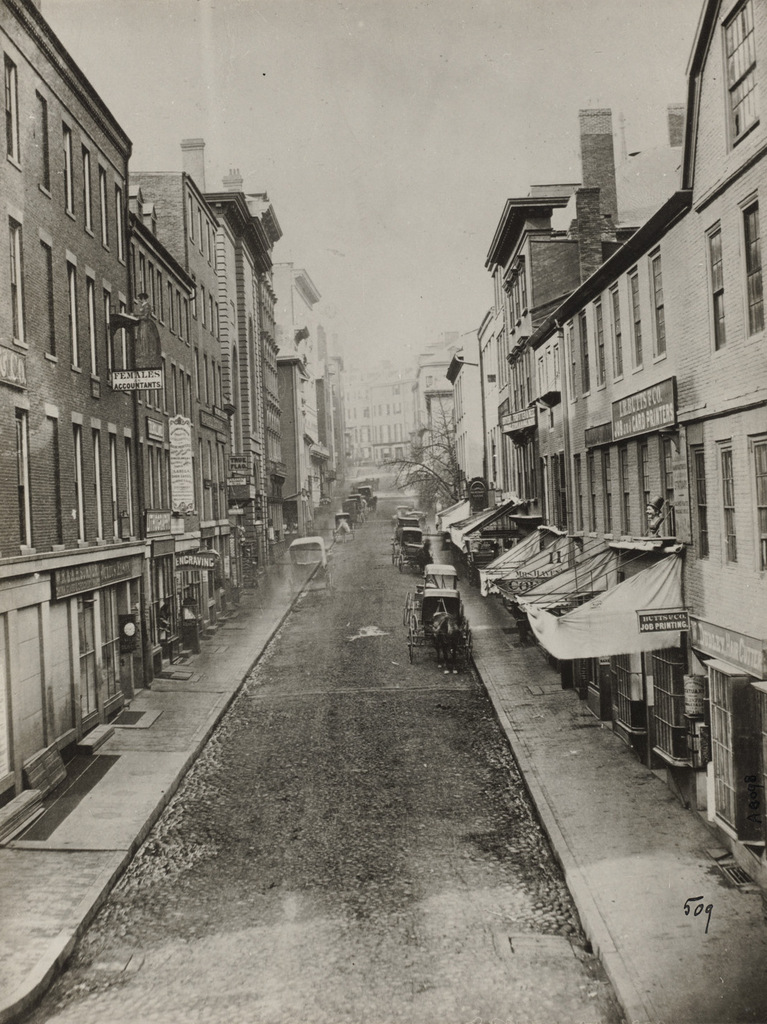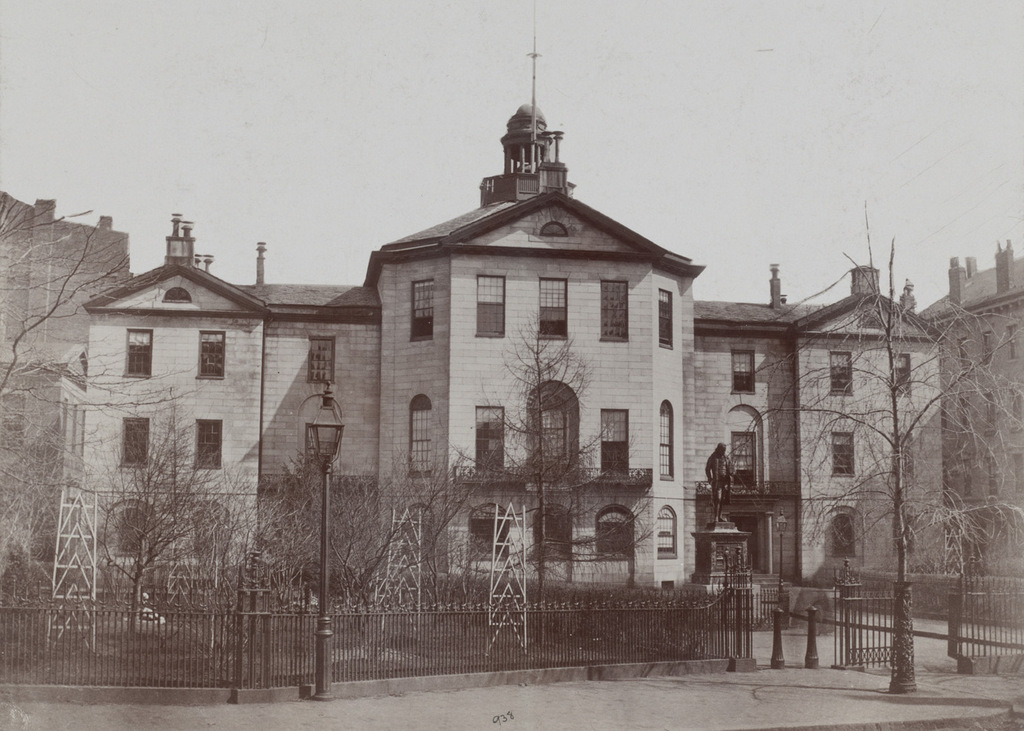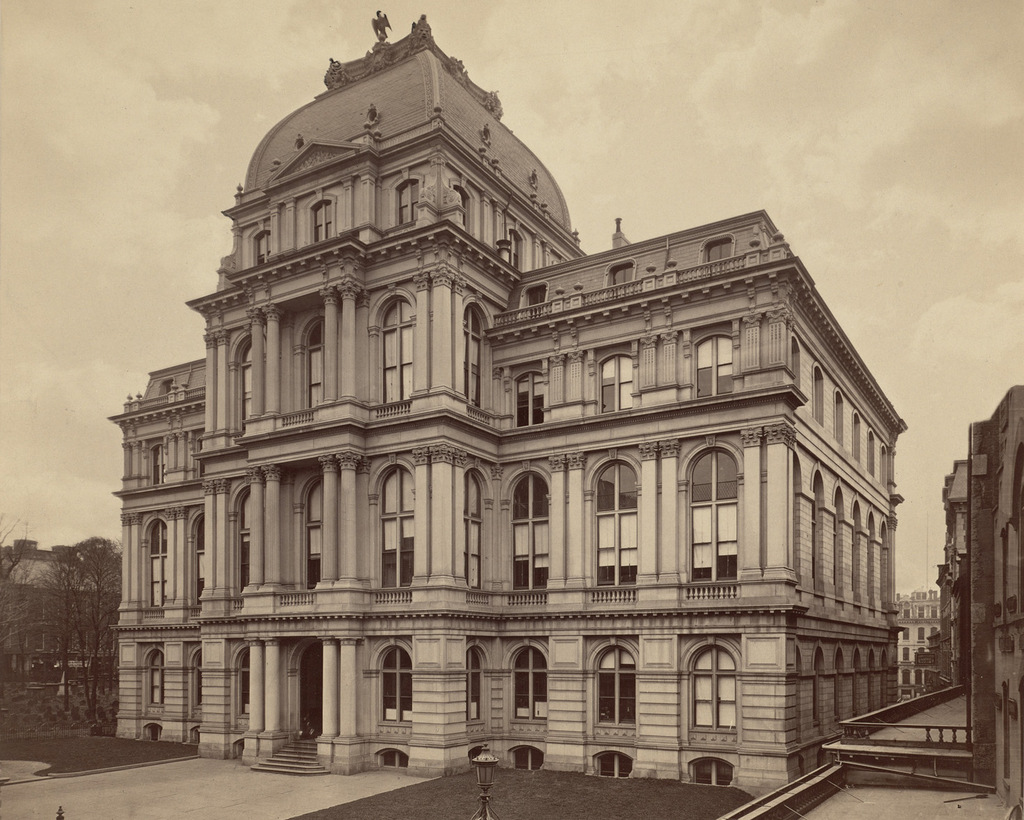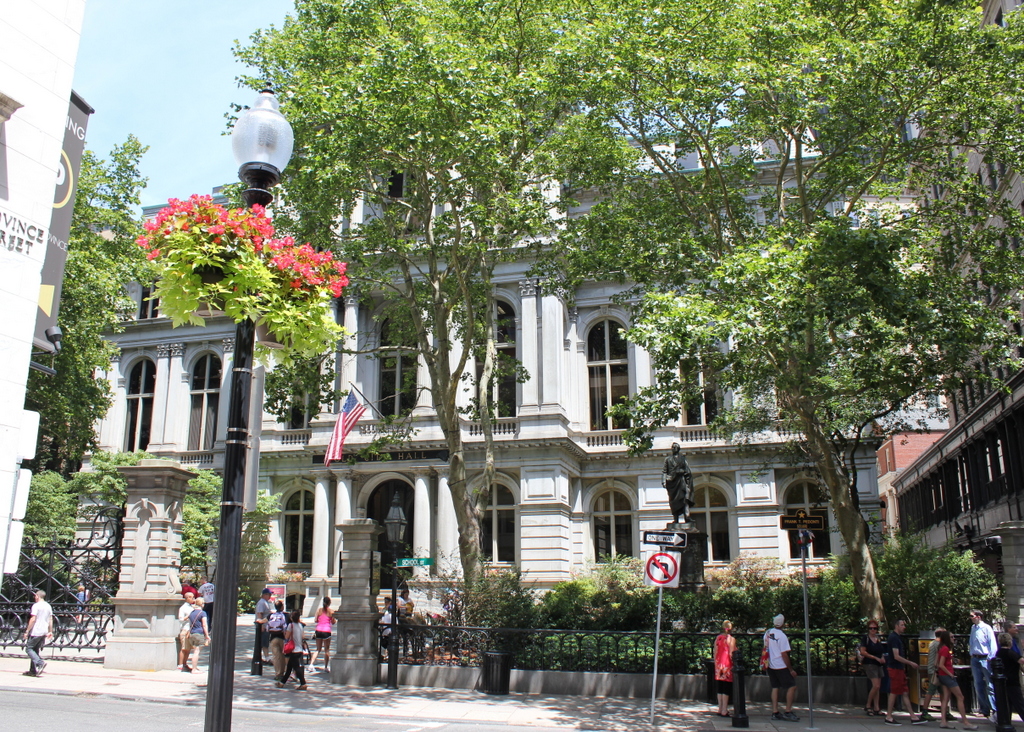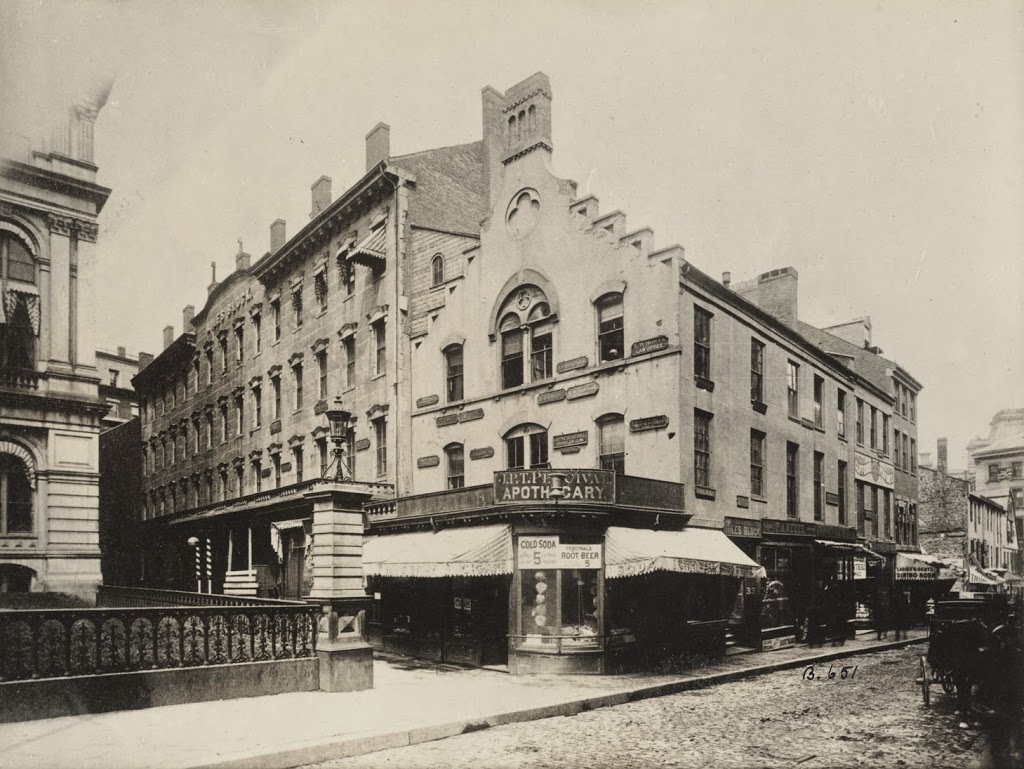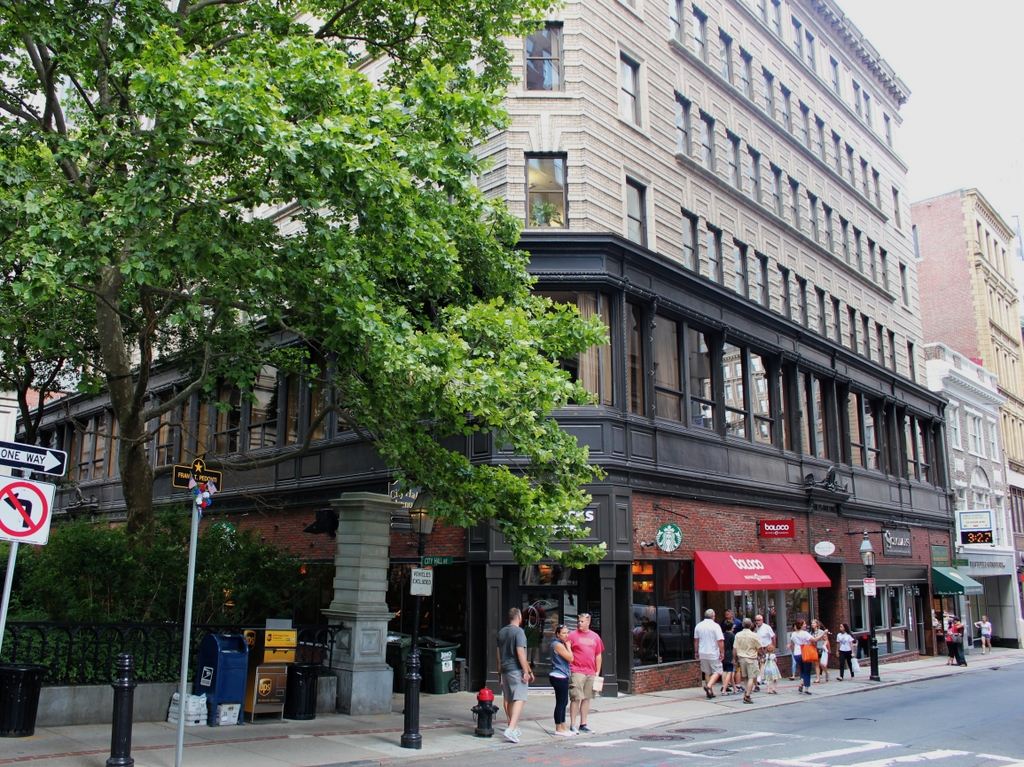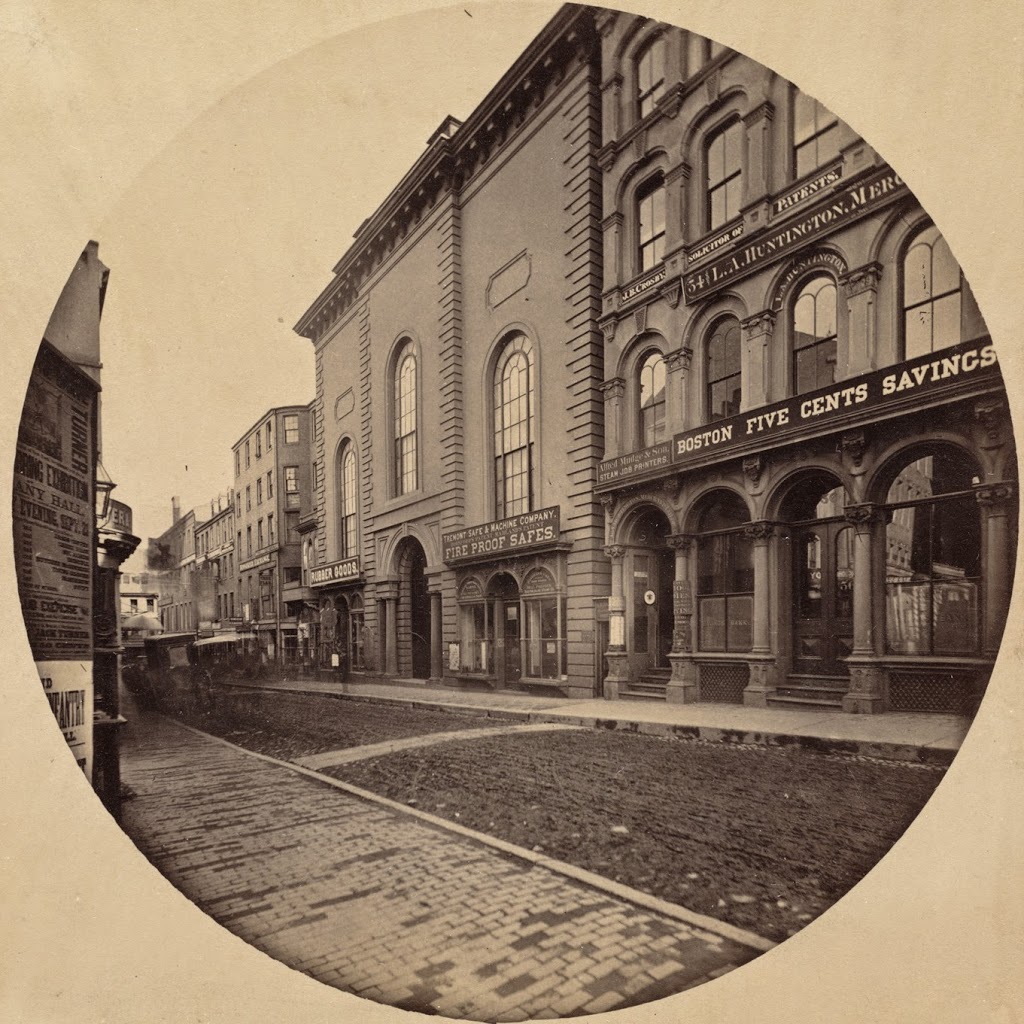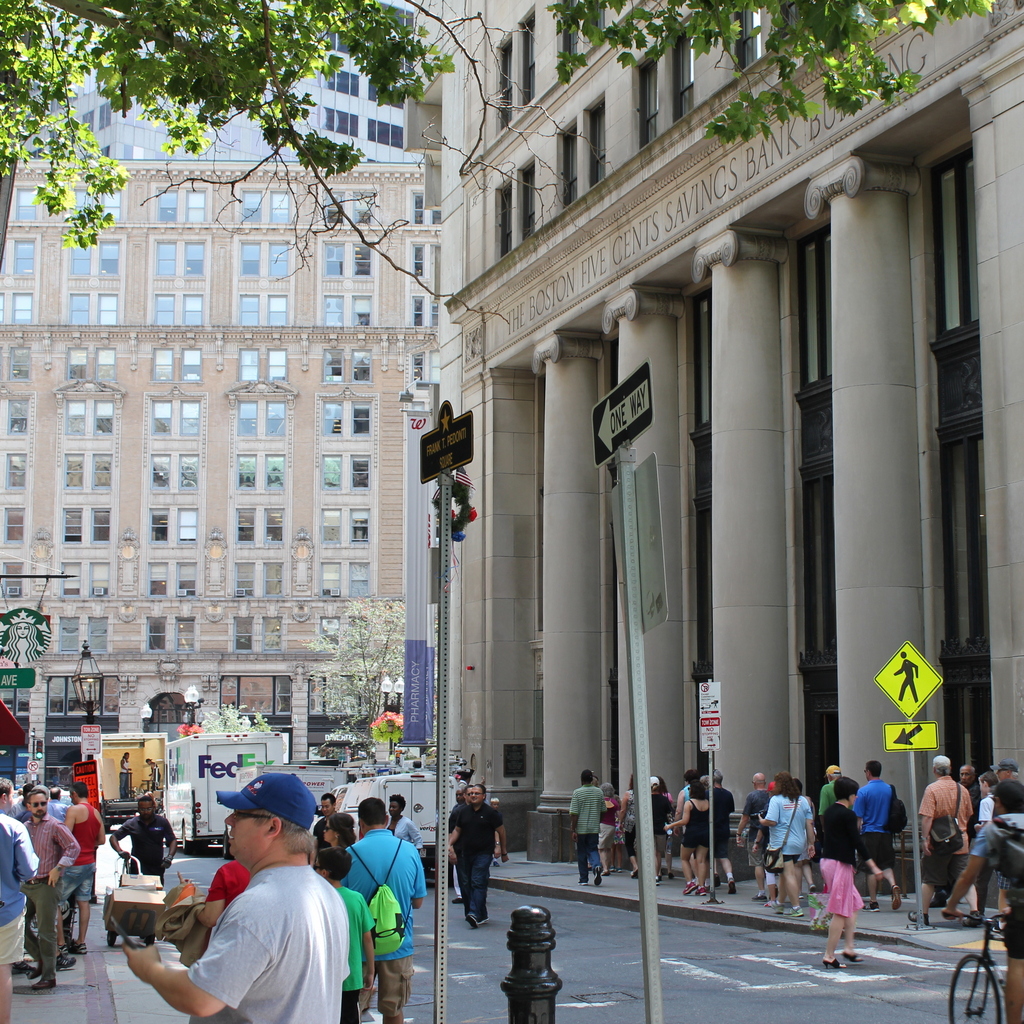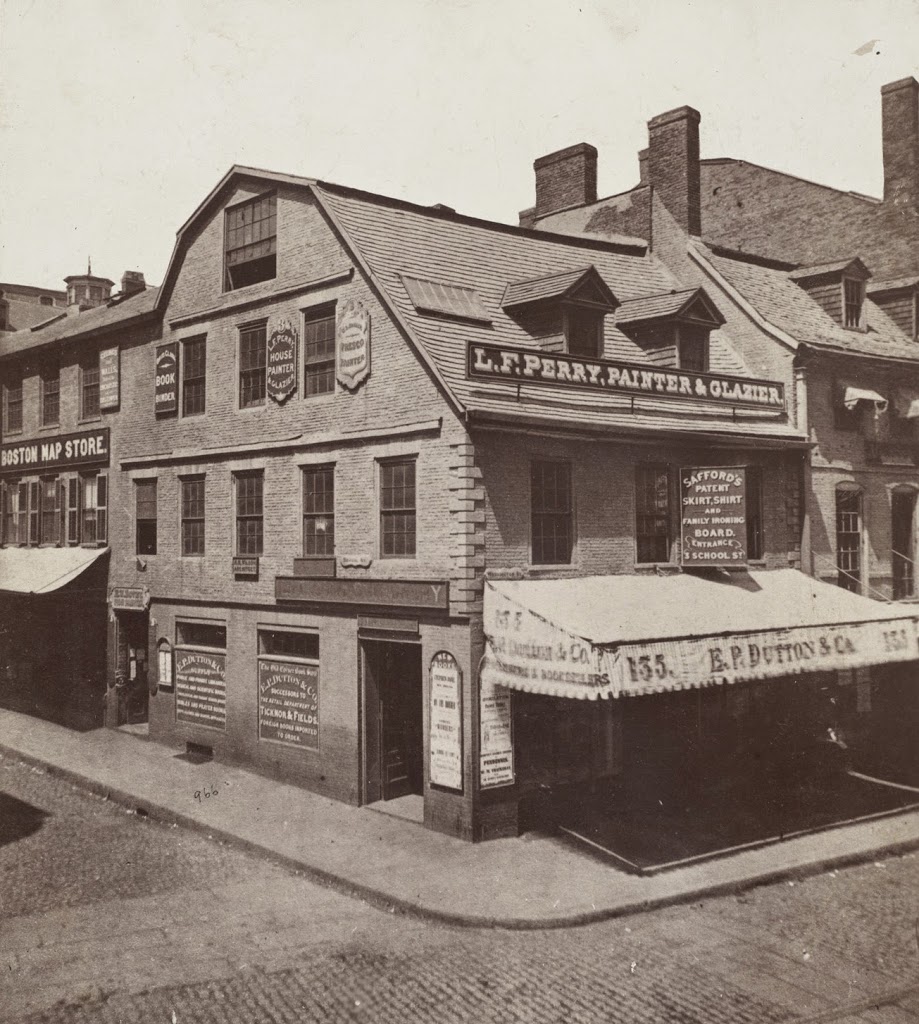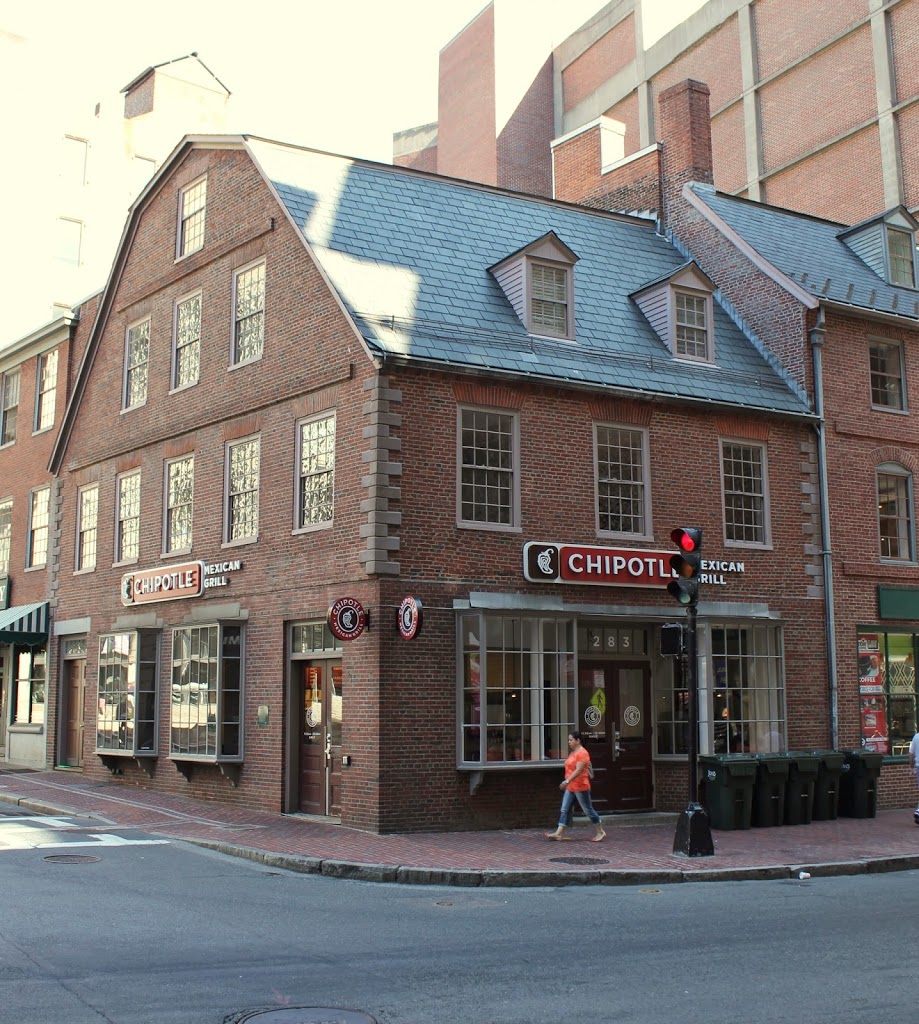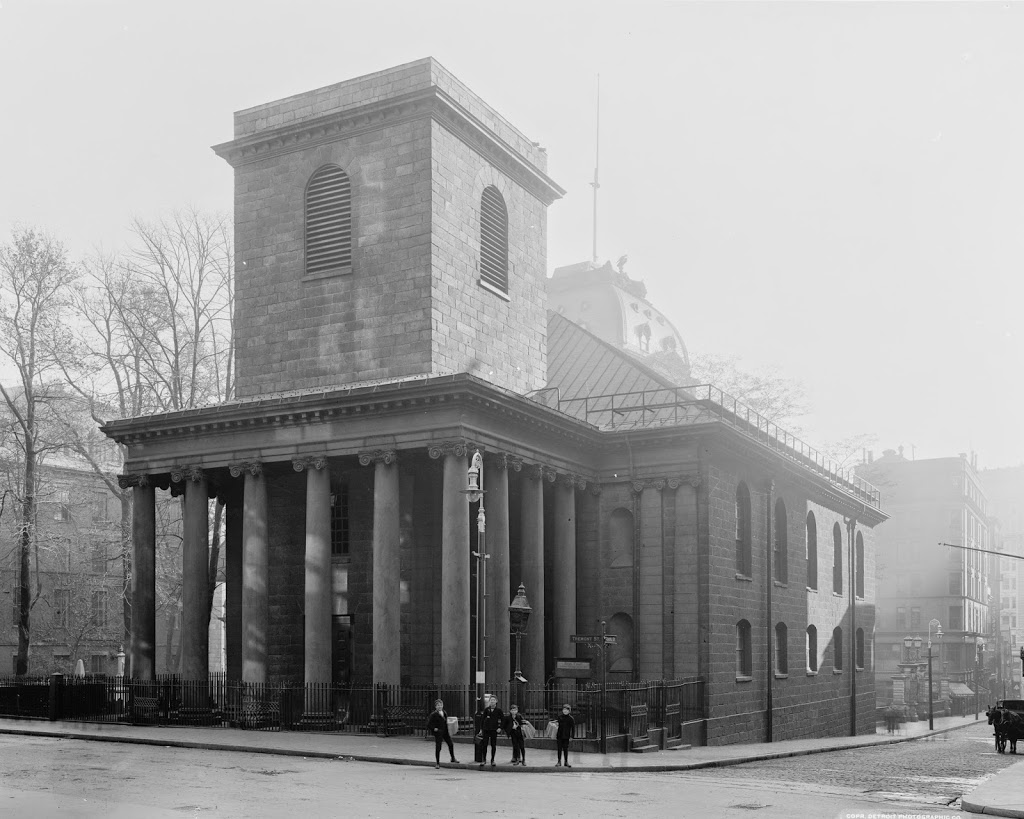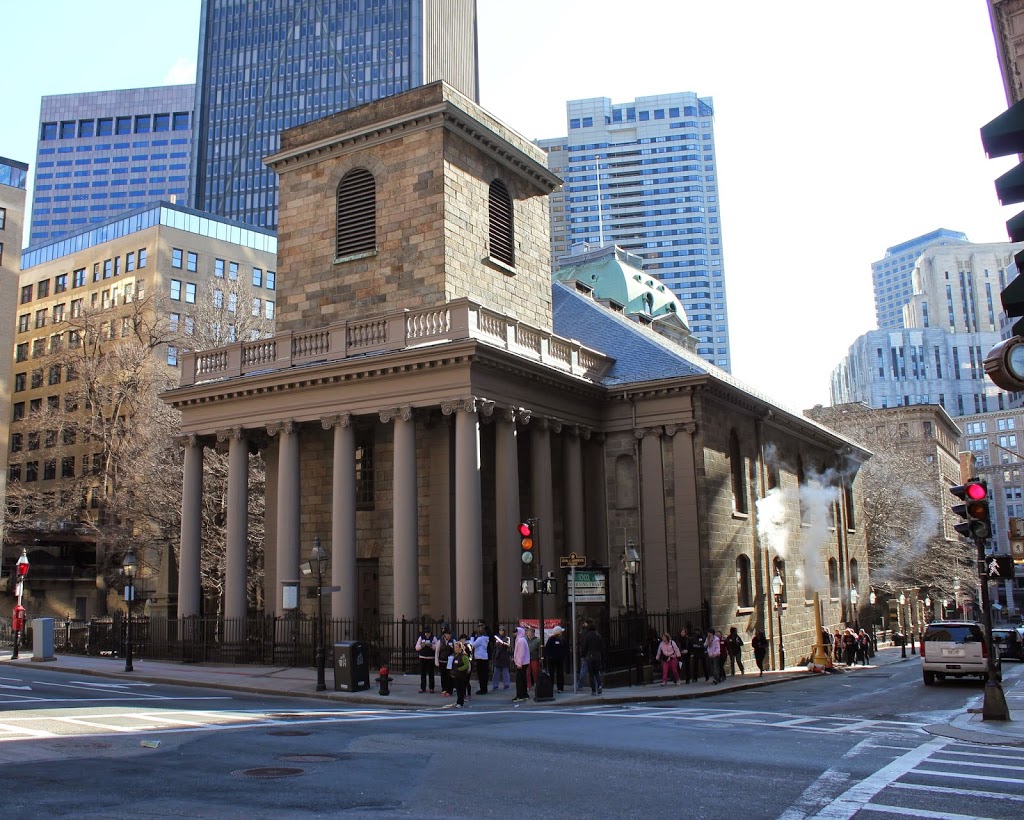Looking up School Street from Washington Street in Boston, around 1860. Image courtesy of the Boston Public Library.
School Street in 2015:
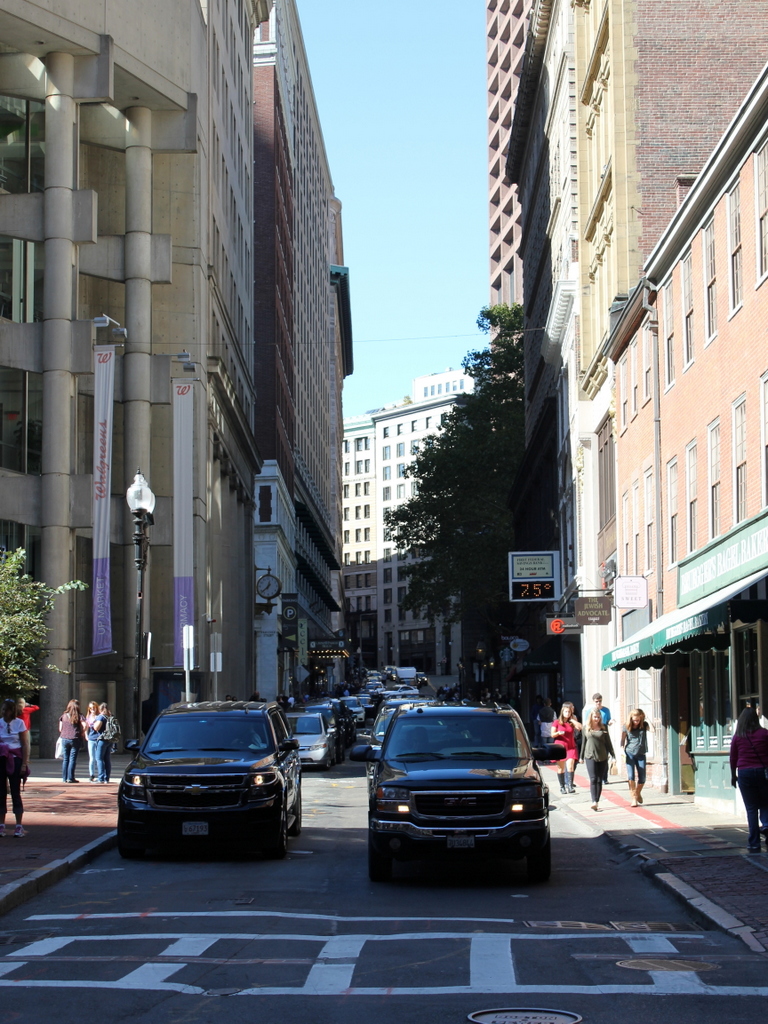
School Street is only a couple hundred yards long, yet this narrow downtown street has been home to a number of historic sites. The entire street is part of the Freedom Trail, and notable sites along here include King’s Chapel at the Tremont Street end and the Old Corner Bookstore on the right, here at the Washington Street end. In between, opposite Province Street, were two generations of Boston City Hall buildings, built on the former site of the Boston Latin School. The street is named for this school, which was here from 1704 to 1748, and during that time educated future Founding Fathers such as Benjamin Franklin, John Hancock, Samuel Adams, and Robert Treat Paine. Another School Street landmark, which has long since been demolished, was the original Parker House hotel, which was built in 1855 and is barely visible in the distance on the left side, on the site of the present Omni Parker House. A couple notable guests who visited the hotel not long after the first photo was taken included John Wilkes Booth, who stayed here eight days before assassinating Abraham Lincoln, and Charles Dickens, who lived here for five months in 1867-1868 during his tour of the United States.
The School Street that Charles Dickens would have seen was a narrow, busy street, and today not much has changed in that regard. In fact, the 1860 scene was probably busier than it appears. There are no pedestrians visible, which was probably due to the photographer using a long shutter speed, but in all likelihood there were plenty of people walking around at the time. None of the buildings are still standing from the first photo, though, except for the barely-visible King’s Chapel in the distance and the Old Corner Bookstore on the far right. The original part of the bookstore was built in 1712, and it was expanded up School Street in 1828 with the construction of the two three-story brick buildings on the right.

